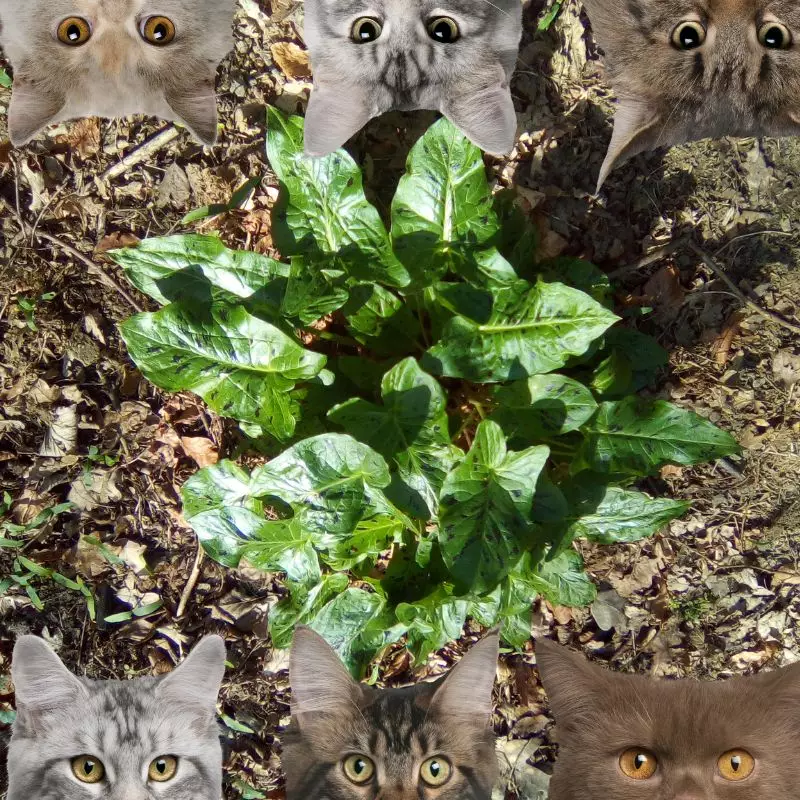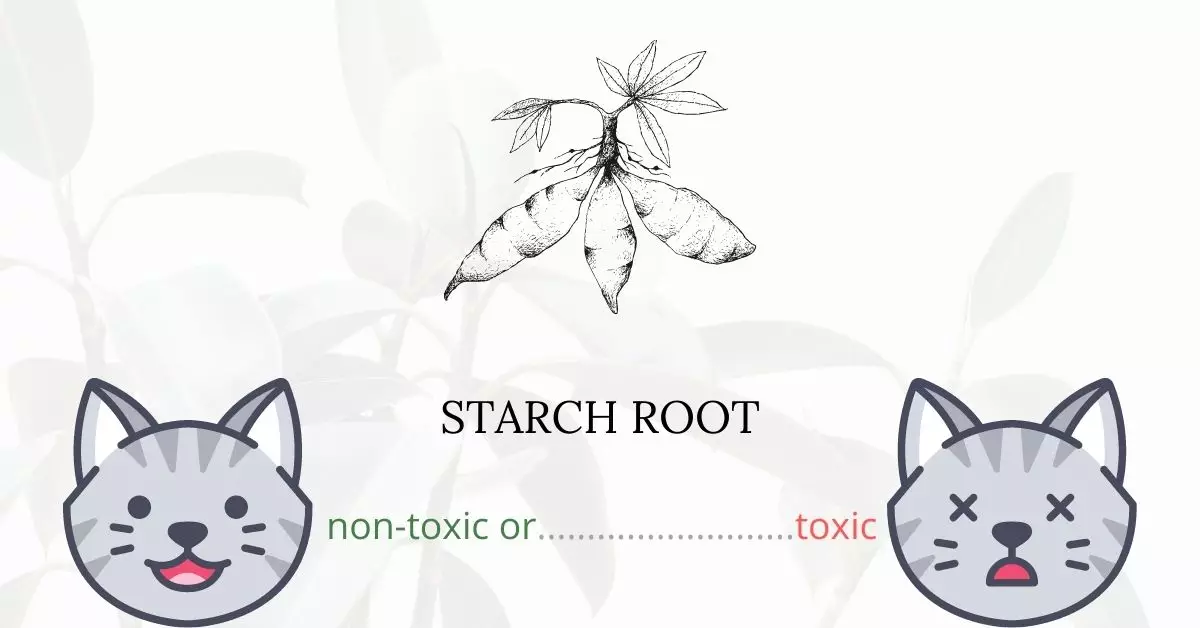Yes, the starch root is toxic to cats.
This article has been crafted in collaboration with a team of experienced DVMs (doctors of veterinary medicine) who have provided their expert insights. With their guidance and through our extensive research on high-authority websites such as ASPCA and PetMD, we are committed to delivering accurate and up-to-date information about the potential risks plants like the starch root pose to our feline companions.
The primary concern with the starch root is its high content of ‘insoluble calcium oxalates.’ These oxalates serve as a natural defense mechanism for the plant, deterring animals from regarding it as a food source. When consumed, the sharp, crystalline nature of these oxalates can embed into an animal’s soft tissues, leading to symptoms like swelling, discomfort, vomiting, and diarrhea. Additionally, the starch root contains a toxin called proteinase. When ingested, proteinase interferes with several neurotransmitter enzymes in the animal’s body, resulting in disorientation and behaviors that wouldn’t typically be observed if only oxalate was consumed.
Clinical Signs of Starch Root Poisoning in Cats

When a cat comes into contact with, inhales, or consumes the starch root plant, it may exhibit several clinical signs due to the toxic components found within this species of the Araceae family. The manifestation of symptoms is primarily due to the presence of insoluble calcium oxalates and proteinase.
- Vomiting: The ingestion of starch root often leads to vomiting as the body’s immediate response to expel the ingested toxins. The sharp crystalline oxalates cause irritation to the stomach lining, prompting this reaction.
- Diarrhea: The irritants within the starch root can disrupt the normal function of the cat’s gastrointestinal system, leading to diarrhea. This is another way the body tries to eliminate the harmful substances.
- Oral Irritation: The insoluble calcium oxalates found in the starch root have a sharp, crystalline structure that can cause severe irritation to the oral mucosa, resulting in discomfort and pain.
- Swelling: The contact of soft tissues with the oxalates can induce inflammation and swelling as the body’s response to injury, typically around the mouth, tongue, and lips.
- Difficulty Breathing: The swelling and irritation in the mouth and throat can extend to the airway, potentially causing obstruction and respiratory distress, making it difficult for the affected cat to breathe.
- Difficulty Swallowing: Due to the inflammation and swelling caused by the oxalates, the affected cat may find it painful and challenging to swallow.
- Excessive Salivation: The oral irritation and the body’s natural response to expel the harmful substances can lead to an increase in saliva production, resulting in drooling.
Understanding these signs is crucial for early detection and treatment of starch root poisoning in cats, which can significantly improve the prognosis and well-being of our feline friends. If you suspect your cat has come into contact with starch root or is showing any of these symptoms, seek veterinary attention immediately.
First Aid and Treatment of Starch Root Poisoning in Cats

If you see your cat eating a part of the starch root, give him or her some yogurt, milk, or cheese. This will aid in the precipitation of some calcium oxalates and will relieve the sensation of oxalic acid discomfort. If your cat continues to experience symptoms after doing this, consult a veterinarian immediately.
When you take your cat to a veterinary facility, the veterinarian will examine the symptoms and determine how serious they are. Cats that have had recurring bouts of vomiting and diarrhea will almost certainly be given hydration treatment. This will replenish the cat’s lost fluids and prevent catastrophic dehydration. Depending on the extent of your cat’s symptoms, the doctor may recommend further therapies.
Recovery from Starch Root Poisoning in Cats

Cats will recover from starch root poisoning in most cases within a week; however, aged cats may require more specialist treatment. The majority of cats will not require a follow-up visit following treatment. But, those who have been seriously impacted by issues such as dehydration may benefit from another session to monitor their improvement.
Prevention of Starch Root Poisoning in Cats
If starch root is growing in your yards, it would be best to remove it immediately. Keep your house cat-friendly and restrict your cat’s access outdoors.
If you love plants but have cats at home, check out these lists:





